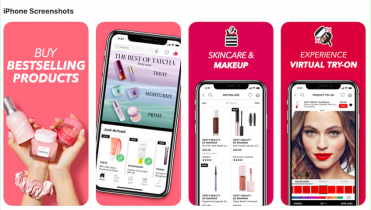With millions of different companies worldwide and cut-throat competition, the central tenet of businesses is undergoing a sea-change.
Start-ups like 4DHealthWare and Biobot Analytics are leading the way, and business today is all about customer satisfaction.
Bill Gates coined the phrase, ‘Customer is King.’ With so many world-class options available for every product and service, the only way to differentiate in the marketplace now is how you treat your customers.
Numerous surveys suggest that customers highly value great customer experience. However, only 1 out of 26 customers complain about poor customer service, and the rest just leave without saying anything.
Clearly, you need to make strides in improving customer satisfaction if you want to scale up your business. If you don’t focus on your customers, someone else will.
Here are five ways to use technology to improve customer satisfaction:
1. Leverage Mobile Apps
Customers today want undivided attention.
A great example of someone who understood that is Audrey Gelman, who once addressed 400 of her clients at her New York office while being six months pregnant. This goes to show just how much she prioritizes her customers and their needs.
‘Round the clock’ service doesn’t mean being at the office 24/7 anymore. You can cater to the needs of your customers by developing and using a business app.
Outsourcing the whole app development is common practice today and enables entrepreneurs without coding knowledge to create an additional channel for communicating with their customers.
A credible business app lets you track the needs of your customers and requirements in real-time. Moreover, it empowers your clients to raise tickets about problems that you can address immediately.
All in all, the main idea is to build an all-inclusive platform to offer client discounts, announce new avenues of product or service extension, special offers for select clients/vendors, and customer engagement.
Take Sephora’s mobile application, for instance:

This app notifies you about loyalty programs, discount coupons, and special offers. Moreover, you can look out for items that are out of stock at the store. If it is unavailable on the mobile app as well, you will get a notification when it gets restocked. Once you get notified, order your product straight away via the Sephora app.
This perennial omnichannel cycle is not only useful for the customers but continues to generate more revenue.
According to statistics, around 86% of customers are willing to pay more to experience immediate and seamless customer service as provided by such apps. Additionally, customers who get easily accessible features via such mobile apps are likely to have a higher lifetime value.
Needs can arise at any point in time, and quick redressal of client requirements will boost your brand image, ensure sustainability, and create a positive space for your business in customer minds.
2. Conduct Surveys
Gone are the days when businesses had to make painstaking survey calls to its customers. Using technology, you can glean the same feedback much more efficiently.
At first, you need to ask the right questions, including:
- Is the customer happy with the current service/ product or not?
- Which customer touchpoints can be utilized better?
- Which elements other than customer service and pricing does the customer prioritize?
You can take inspiration from Paldesk.
Paldesk launched pop-ups in their latest releases, successfully incorporating ideas generated over regular 2-month long survey & customer feedback campaigns.

To make the most of surveys, conducting them once every year isn’t enough. Customer preferences and priorities change over time. A business must be agile enough to incorporate both short-term & long-term changes, which can be achieved through year-round continuous surveys for real-time customer information.
3. Live Chats
Chatbots are becoming increasingly important in the business sphere. They are now addressing client needs during off-hours at the office and taking care of repetitive and mundane tasks during office hours.
The result?
You get more time to devote to the finer aspects of business, without compromising business process continuity.
Here’s how they are helping in a business environment:
- They respond to customer queries quickly, if not immediately. 87% of customers will talk about and share a great, prompt customer experience
- They engage your customers, which help in retaining existing customers and acquiring newer leads
- They help save the operating costs of a business. Statistics suggest that by 2022 chatbots will save around $8 billion, which can be utilized in providing better customer service
- They work 24/7 and don’t take breaks
While chatbots don’t have the “human” touch of live customer support, customers will appreciate quick tips or guidance, while having the option to redirect more complex issues to a real person.
4. FAQs
The world is moving towards self-reliance, and smart businesses are aiding it.
If statistics are anything to go by, 91% of customers prefer online knowledge base as compared to company representatives. Clearly, not many customers want to place the call to talk with a customer representative anymore.
And this is where FAQs come into the game.
FAQs or frequently asked questions are like online documents where you mention the most common queries posed by your target audience, along with their answers.
By carefully curating continuous round-the-year online surveys and live chats, you can identify what customer pain points come up repeatedly and include them in your FAQ page.
Here’s an excellent FAQ template example:

Simply put, FAQs also help you address major queries in a business round the clock.
5. YouTube Channels & Video Tutorials
With the rise of technology, more and more entrepreneurs are adopting YouTube, webinars, and videos as their preferred mode of reaching out to customers.
Here are some successful examples to drive inspiration from:
- Future Females, led by Toni Adentan, in partnership with Facebook, recently hosted three webinars to boost self-reliance and drive businesses using online platforms, exclusively targeted at women.
- Heart behind hustle run by KamiliaGornia is another great example. Gornia leverages video tutorials to help out her target audience and address their issues. Through videos, it becomes easier for entrepreneurs to offer superior customer service to their customers round the clock, without devoting specific time to each individual. And customers can always replay the video.

Before selecting the topics for your video tutorials, make sure to ascertain the pain points of your customers via surveys and feedback. Once you know what’s bugging your customers, you can holistically address those specific queries in a video or YouTube channel.
It enables businesses to connect better with customers on a personal level, solve problems comprehensively and stand out in the marketplace.
Summary
Debbie Fields built a $500 million cookie company in the 1970s due to her customer-centric attitude.
She couldn’t leverage the power of the internet. But you can!
As a female entrepreneur helming a small-scale business, probably filling other demanding and time-consuming roles in your private life as well, you can take advantage of technology to streamline your business as much as possible.
The great thing is that it doesn’t mean less engagement with your customers. Chatbots, apps, and FAQ pages come especially in handy to do away with some cumbersome customer service tasks, all while helping you develop a relationship with your clients above and beyond service timings.
With the internet at your fingertips, you can reach out to multiple customers, address their queries, engage, and guide them every step of the sales funnel. You just have to leverage the right technology and focus on helping out your target customer base.
After all, a business that provides great customer experience is clocking 5.7 times the revenue of a business that doesn’t. It’s time you took note and allotted customer service the focus it deserves.
About the Author
 Ashley Wilson is a digital nomad and writer for hire, specialized in business and tech topics. In her self-care time, she practices yoga via Youtube. She has been known to reference movies in casual conversation and enjoys trying out new food. You can get in touch with Ashley via Twitter.
Ashley Wilson is a digital nomad and writer for hire, specialized in business and tech topics. In her self-care time, she practices yoga via Youtube. She has been known to reference movies in casual conversation and enjoys trying out new food. You can get in touch with Ashley via Twitter.







